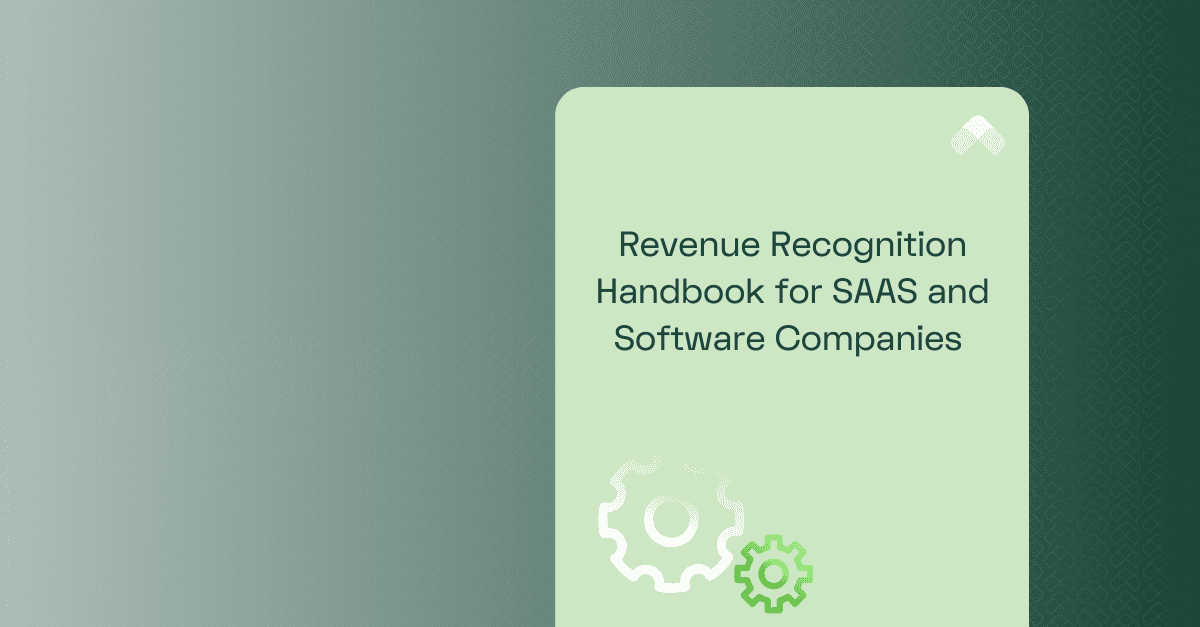Over the past decade, the Software-as-a-Service (SaaS) industry has grown by over 500%, poised to hit $299 billion in 2025. This impressive growth is a testament to the increasing demand for cost-effective, scalable software solutions for various business functions like accounting, marketing, and project management.
SaaS Chief Financial Officers (CFOs) play a pivotal role in sustaining growth and revenue. Today’s CFOs go beyond traditional financial management to drive growth, manage risks, and optimize operations across departments while aligning their financial strategies with broader business objectives.
A key aspect of their role is measuring growth and performance. This entails tracking and optimizing SaaS metrics like Lifetime Value (LTV) and Annual Recurring Revenue (ARR) to pinpoint areas for growth and inform decisions. In 2025, CFOs will monitor even more metrics for strategic insight and greater precision—offering valuable lessons for any forward-thinking SaaS business.
Below, explore the key metrics CFOs are tracking in 2025 and how they employ automation tools like RightRev to simplify revenue reporting and forecasting for SaaS and recurring revenue models.
Why Tracking SaaS Metrics Is Crucial in 2025
Imagine driving a car on a winding road at night with no speedometer, GPS, or headlights—just you and the dark. Every turn becomes a guess, and every decision feels like a risk.
Unsettling, right?
The same scenario applies to running a SaaS business model without tracking key SaaS metrics like revenue, LTV, and ARR—it’s simply driving blind. For a subscription business, having access to real-time metrics is critical for sustainable growth.
Metrics act like features that simplify the driving experience, allowing CFOs to spot growth opportunities, adapt their strategy, and stay on course toward their objectives.
And not just that—monitoring and tracking SaaS metrics in 2025 supports:
- Strategic decision-making: Tracking SaaS metrics helps companies make data-driven decisions about pricing, marketing spending, product development, and customer support, ensuring efficient resource allocation for optimal impact.
- Operational clarity: Monitoring metrics can reveal what’s working and what’s not, allowing SaaS companies to adjust and adapt their strategies to boost customer satisfaction and retention rates.
- Business alignment: Metrics are a compass for teams and departments, ensuring every function is aligned with the broader company’s goals. They bridge departments and guide strategy toward the core objectives.
Tracking SaaS metrics is more than just a routine function—it’s a strategic imperative that can secure investor confidence and drive company valuation. For instance, ARR provides concrete evidence of the company’s growth trajectory and performance, which can prove that it has reliable recurring revenue.
Gaining insight through SaaS metrics requires up-to-date data to uncover growth opportunities, reduce risks, refine forecasts, and optimize strategy. Remember, metrics and insights are only as accurate as the business data—incorrect, incomplete, or delayed data leads to flawed forecasts and poor decision-making.
Key Metrics CFOs Are Monitoring in 2025
Here are the key metrics that CFOs are tracking in 2025 to optimize their operations and drive growth.
GAAP Revenue
Generally Accepted Accounting Principles (GAAP) revenue is the revenue a company reports in its financial statements based on GAAP rules. GAAP provides accounting rules for reporting financial statements to ensure consistency and comparability. The principle requires firms to recognize revenue when it’s earned—not when cash is received.
SaaS companies typically have a recurring revenue business model, where customers pay for ongoing access to a product or service. GAAP compliance states that revenue should be recognized over time as the service is delivered. For instance, when customers pay for annual subscriptions, the amount can’t be recorded immediately—it must be spread across the service period (i.e., ratable revenue).
Tracking GAAP revenue provides an accurate view of business transactions and revenue, simplifying cash flow predictions and compliance efforts.
Deferred Revenue
Also known as unearned or prepaid revenue, deferred revenue is the money a SaaS company bills in advance for ongoing services awaiting fulfillment. This amount is a liability on the balance sheet but represents potential future revenue, which finance teams can recognize after fulfilling contractual obligations.
For example, a customer pays $12,000 for a yearly subscription at $1,000 per month. When the company delivers one month of service, the remaining $11,000 is deferred revenue.
Tracking this metric helps understand a company’s future undertakings, strategize upcoming resource allocations, forecast revenue, and prevent overstating earnings—all impacting investor or shareholder confidence. Note that deferred revenue is part of a company’s Remaining Performance Obligations (RPO), which accounts for billed and unbilled revenues.
Annual Recurring Revenue (ARR)
ARR is a forward-looking metric that estimates the total revenue a SaaS company will receive in a year from subscriptions and renewals. It plays a critical role in evaluating the stability of a reliable revenue stream.
It’s an important metric for companies and investors as it provides accurate insight into a company’s predictable revenue, supporting growth forecasting and planning.
For instance, if a customer purchases a two-year subscription for $24,000, the ARR would be $12,000 yearly. With 55 similar customers, the ARR would be $660,000.
Tracking the ARR metric enables companies to analyze their financial performance, evaluate the success of their services, and make decisions on pricing and expansion.
With ARR visibility, software companies can make long-term plans for business growth. Here is a typical scenario: A company called SaaSGrain sees its ARR increase from $1.5M to $2M over 12 months.
Over this period, the company recorded a low churn rate of 95%, with some clients upgrading their plans. With these insights, SaaSGrain can consider initiatives like expanding into new regions and hiring more staff to drive growth.
Remaining Performance Obligations (RPOs)
RPO represents the total revenue from future performance obligations—whether billed or not. It comprises two figures: deferred revenue and backlog.
For example, a customer signs a two-year contract and the company bills only for the first year at $10,000. The second year’s unpaid $10,000 is backlog, not deferred revenue. Backlog makes up the unearned and unbilled amount of the total RPO revenue.
Keeping track of this metric provides a clear view of future revenue, helping with planning and forecasting. This supports CFOs leading a recurring revenue SaaS operation to project cash flows with confidence.
It allows investors to understand a company’s financial health and predict future revenue.
Unbilled Revenue
Unbilled revenue is earned revenue that hasn’t been invoiced or billed yet. This occurs when a company has fulfilled its contractual obligations but hasn’t issued an invoice for various reasons, including advance services, add-on purchases, invoice delays, upgrades, and one-time charges or projects.
Tracking unbilled revenue is crucial to ensuring accurate calculations of key metrics like ARR, CAC, and CLV. If it’s not tracked, there’s a risk of missed revenue or financial losses, which can impact a company’s financial stability and investor confidence. It also makes it harder to evaluate the full scope of revenue generated from a single customer.
Customer Lifetime Value (CLV)
Another key metric that CFOs track is CLV, which represents the total revenue a company expects to generate from a customer throughout their relationship with the business.
For example, if a customer pays $1000 per month and stays with the company for 12 months before unsubscribing, their CLV is $12,000 (i.e., $1000 * 12).
A higher CLV means that existing customers stay longer, upgrade to higher tiers (from low tiers or freemium models), and renew their subscriptions, often influenced by favorable customer usage patterns over time.
On the contrary, a low CLV can indicate a high churn rate and low net revenue retention (NRR).
In particular, CLV should be used in relation to a company’s Customer Acquisition Cost (CAC). The higher the CLV, the lower the CAC becomes, demonstrating that even more resources can be allocated to prospecting and closing deals (or other purposes).
That’s why excellent customer support and onboarding that enhance customer loyalty and experiences ultimately reduce CAC while boosting CLV.
For instance, SaaSGrain finds its CLV is $12,000 while CAC is $4,000—a healthy 3:1 ratio. The company then automates onboarding, upselling, and customer support, boosting its CLV to $15,000. Tracking this metric allowed SaaSGrain to evaluate the return on various investments, identify areas of improvement to enhance customer experiences, and drive customer retention.
Why Manually Tracking SaaS Metrics Fails
Tracking SaaS metrics is crucial for understanding performance, forecasting growth, and ensuring financial health in a recurring revenue model. However, doing this manually or with disconnected systems presents several challenges, including:
- Manual errors and data silos: Companies that rely on manual methods and spreadsheets are vulnerable to human error. Using disparate systems results in data silos, hindering visibility and obstructing valuable insights. This leads to inaccurate or incomplete reports, affecting forecasts and investor confidence.
- Compliance risks: Without automation, the risk of non-compliance with revenue recognition standards like ASC 606 increases. Manual processes make it difficult to apply consistent rules, maintain an audit trail, and track revenue, leading to inaccurate financial reporting and penalties.
- Delayed insights: In a fast-moving SaaS business, decisions can’t wait for end-of-month reports. Manual processes and disconnected systems often create lag times between when data is captured and when it’s analyzed—if it’s analyzed at all. This delay prevents finance and go-to-market teams from spotting trends, identifying risks, or acting on opportunities at the moment.
Without real-time visibility into metrics like ARR, churn, or deferred revenue, teams are forced to make reactive decisions. For example, waiting too long to optimize the pricing structure could lead to missed upsell opportunities—whether it’s pulling back on spending too late or missing the window to upsell a customer. Real-time insights aren’t just nice to have; they’re essential for driving growth, forecasting with accuracy, and staying competitive.
In SaaS, manual processes are inefficient and can lead to poor decision-making—up to 94% of IT executives attest to this. This is why more and more SaaS businesses are adopting revenue automation; empowering CFOs to stay on top of every key revenue metric and gain actionable insights in real-time. It also eliminates errors and frees the accounting team to focus on high-value tasks.
How a Robust Revenue Platform Supports Growth
Effective SaaS metric tracking requires accuracy, quick-time insights, and tools that enable scalability. A robust SaaS revenue recognition platform not only eliminates the risks associated with manual processes and reporting but also provides accurate and optimal visibility into revenue performance. The right software solution also ensures scalability and real-time revenue insights, giving CFOs confidence in their financial reporting.
Here’s how the platform can support growth for a SaaS business and simplify tracking of recurring revenue.
 Streamlined Metric Tracking
Streamlined Metric Tracking
Your revenue recognition software should track all the essential SaaS revenue metrics, like GAAP revenue, deferred revenue, and RPOs while automating manual tasks. GAAP-compliant revenue data gives CFOs confidence in the financials they’re using to guide business decisions.
It ensures investment decisions, budgeting, and forecasting are based on accurate, recognized revenue—not just cash inflows.
 Enhanced Compliance
Enhanced Compliance
The platform automates compliance with standards like ASC 606 and IFRS 15, ensuring accurate revenue recognition. It comes with configurable revenue rules and triggers for accurate revenue calculations. GAAP revenue recognition can be complex and is closely scrutinized during audits.
Real-time access to revenue data ensures the CFO and their team can stand up to audit scrutiny and avoid last-minute surprises.
 Real-Time Insights
Real-Time Insights
With a revenue recognition platform like RightRev, CFOs and Controllers gain actionable, real-time insights that enable faster decision-making and drive meaningful business impact. This clarity is especially helpful in optimizing and projecting monthly revenue trends accurately.
It tracks all contract metrics in real-time and updates deferred revenue waterfalls accordingly so that reports are always up-to-date, without having to wait for month-end to manually generate reports. CFOs can see the bigger picture faster.
 Operational Efficiency
Operational Efficiency
A revenue recognition platform automates complex tasks, enhances data accuracy, and streamlines processes, boosting operational efficiency. It tracks and records revenue in line with standards like ASC 606, eliminating the need for manual tracking and calculations.
This automation frees up finance teams to focus on strategy rather than manual tasks like data entry. Plus, month-end or year-end closing becomes much smoother and quicker as the recurring revenue management software automatically updates revenue data for accurate reporting. Automation saves accounting teams hours or even days of work while getting crucial information to the CFO and other decision-makers faster.
As one Controller put it:
“My team is spending too much time entering basic transaction data. This should be automated so that my team can focus on what we do best: revenue analysis. We need to focus our efforts on the highest-risk areas rather than data entry.”
Keep Track of SaaS Revenue Metrics and Automate Processes With RightRev
Data is the GPS of successful SaaS businesses—all CFOs understand that. And the most impactful CFOs take no chances, closely monitoring key metrics (e.g., deferred revenue, RPOs, CLV) to measure performance, forecast revenue, and drive strategic growth.
But harnessing the power of automation gives CFOs an advantage over manual revenue reporting. Too slow and prone to manual error, manual methods put SaaS companies at risk of compliance penalties and eroded investor confidence. The future of accounting is automated…will you be ready?
Request a RightRev demo today and discover how our powerful revenue recognition software simplifies metric tracking and automation for the SaaS revenue model.




